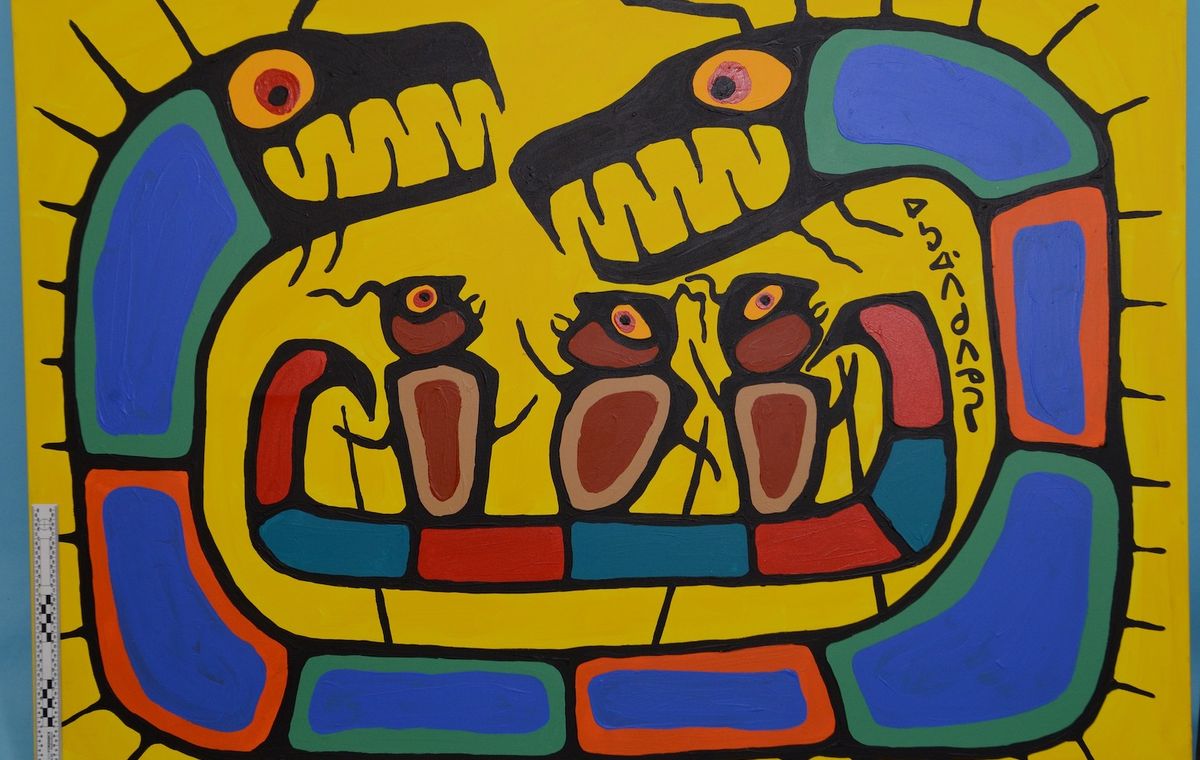On 3 March, the Ontario Provincial Police announced that their investigation into a forgery ring of works by renowned Ojibwe artist Norval Morrisseau had uncovered “the biggest art fraud in world history”.
The case resulted in charges against eight people—including a member of the late painter’s family—and the seizure of more than 1,000 paintings. The forgery ring relied on forced child labour in sweatshops as well as the exploitation of talented young Indigenous artists, underlining larger national issues about Canada’s treatment of First Nations people.
Morrisseau—a ground-breaking artist who survived Canada’s notorious residential school system and a near-fatal illness as a teen to go on to international success after he was "discovered" by Jack Pollock, a Canadian gallery owner who represented Morrisseau for many years—became aware of forgeries of his work on the market in the years before his death in 2007. But it was a 2019 documentary by the Canadian film-maker Jamie Kastner, There Are No Fakes, that brought the issue to wider public attention.
The film’s starting point was a lawsuit launched by the musician Kevin Hearn of the Canadian band Barenaked Ladies against the Toronto-based Maslak McLeod Gallery for selling him an alleged forgery of a Morrisseau painting. It goes on to expose the art-fraud ring based in Thunder Bay—where the artist lived and worked for decades—and suggests that there may be up to ten times more fake Morrisseau works on the market than authentic pieces.
The film was credited with helping Hearn’s lawsuit, which was initially dismissed by the courts on the grounds that he could not definitively prove that his painting was fake. After it was released, the Ontario Court of Appeal overturned the first decision and awarded Hearn C$60,000 (around $44,000). Ontario police also credited the film with inspiring the investigation.
While Kastner says that the number of online viewings of the film has been “spiking” since the 3 March announcement, he says that he is currently in a legal battle with the Ontario police, who want to seize materials from his film as evidence for their case.
Kastner says there are “at least 3,000 more forgeries out there” but that “a huge portion of these disputed works”, especially those in the style of his black dry brush series, “are easy to identify—with a signature on the back in English”. The artist always signed his name in Ojibwe as “Copper Thunderbird” on the front of his works.
Cory Dingle, who runs Morrisseau’s estate, says “the damage to Morrisseau’s art legacy has an effect across the entire Canadian art market”. Others speculate that the forgery ring scandal may actually increase public awareness and market value of the artist’s work.
Considered the founder of the Woodlands School of Art, which drew on traditional Native cosmology, and dubbed “the Picasso of the North” by Marc Chagall, Morrisseau made work that spoke to the cultural and political tensions between Indigenous and settler traditions. But it also celebrated fluidity, both cultural and sexual. (Morrisseau was bisexual and painted many erotic images.) The artist’s later work embraced contemporary idioms, paving the way for painters such as Lawrence Paul Yuxweluptun, who merged Indigenous cosmology with Surrealism.
Morrisseau’s work Indian Jesus Christ (1974), fusing Indigenous devotional symbolism with stained-glass iconography, gained widespread recognition in the 1974 National Film Board documentary The Paradox of Norval Morrisseau.



